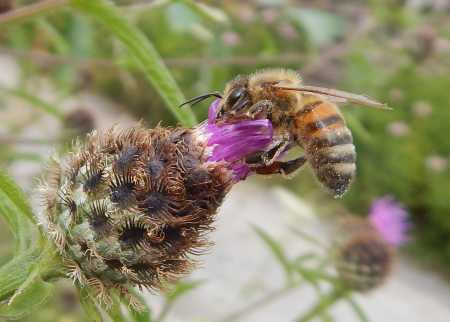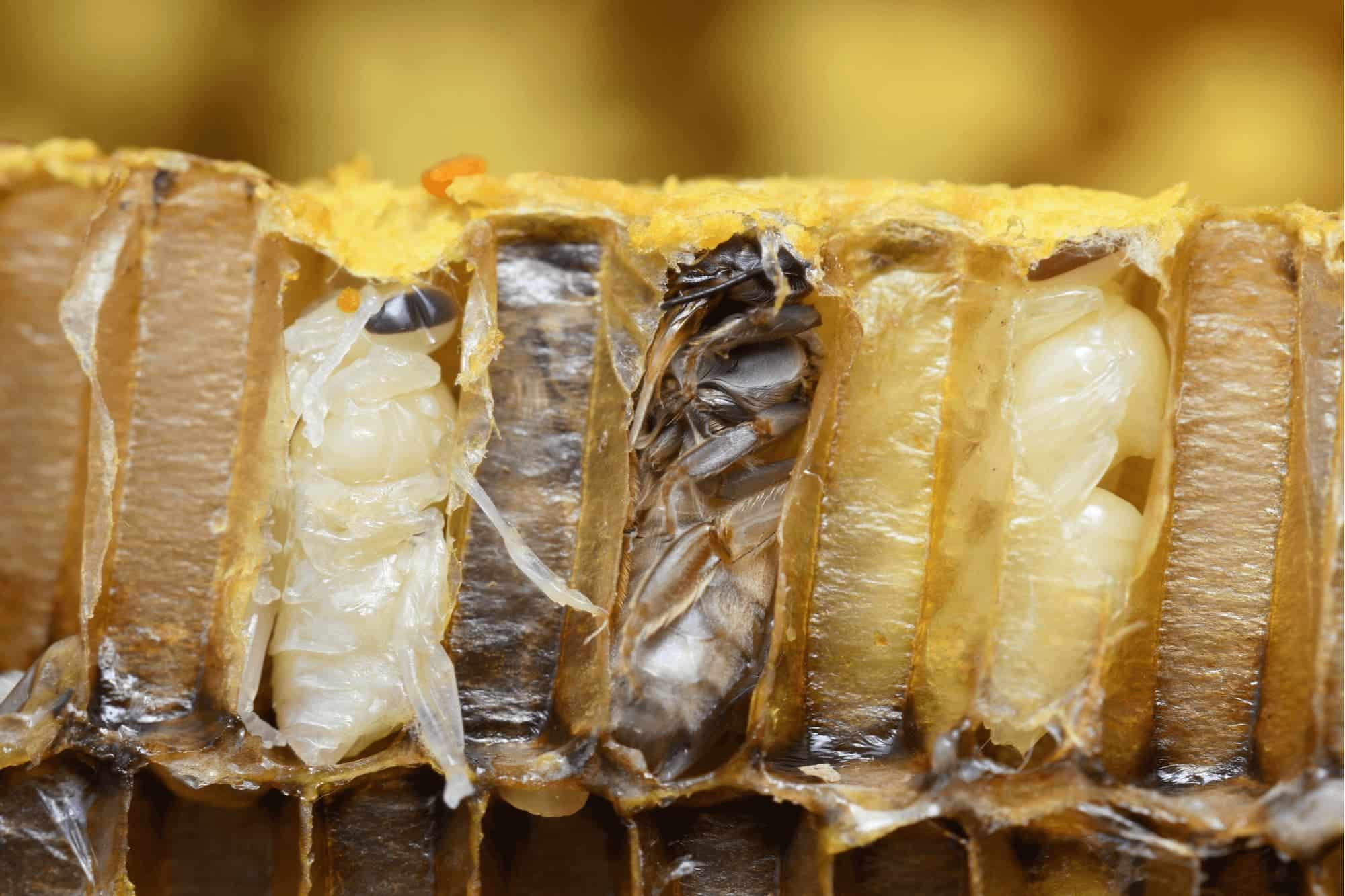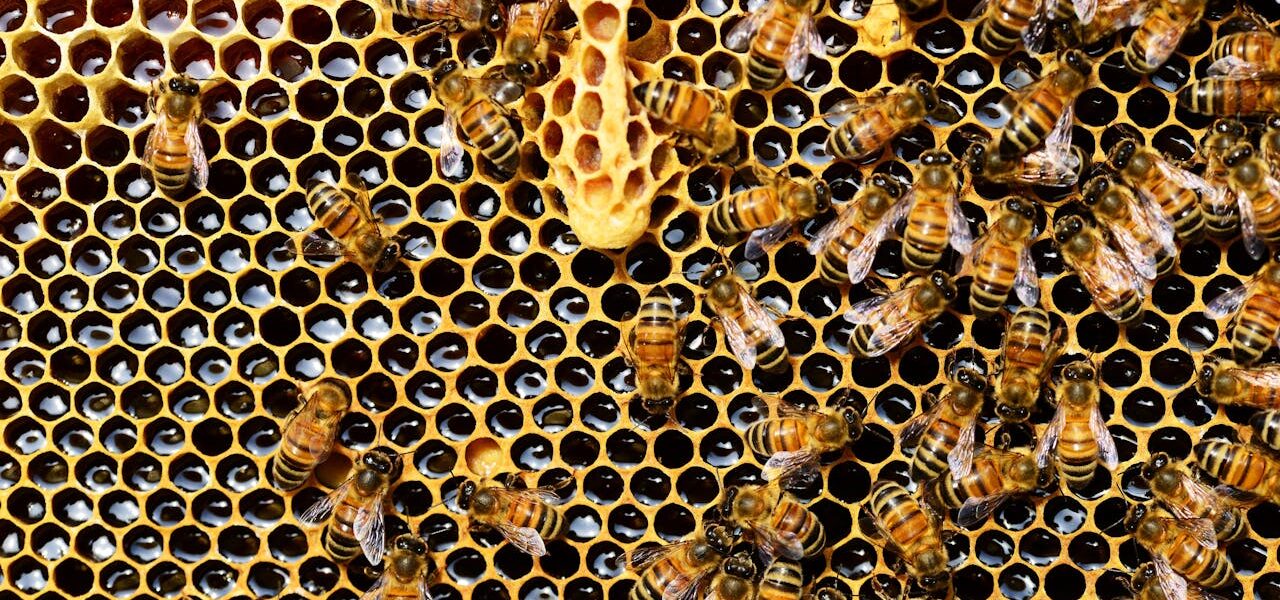How Long Do Bees Live: Unveiling Their Lifespan Secrets
Bees have a lifespan ranging from a few weeks to several months, depending on their role within the colony.
Introduction To The Bee’s Lifespan
Bees typically live for about 4 to 6 weeks during the summer months when they are most active. However, queen bees can live up to 5 years due to their vital role in the hive’s reproduction and longevity. The lifespan of bees varies based on their role within the colony.
The Importance Of Bees
Bees play a crucial role in our ecosystem by pollinating plants, which helps in the production of fruits, vegetables, and nuts. In fact, one-third of the world’s food supply depends on pollination by bees. They also produce honey, which is used in a variety of ways, from cooking to natural remedies. However, despite their importance, bees face many threats, including habitat loss, pesticides, and climate change.
Lifespan At A Glance
The lifespan of a bee varies depending on its role within the hive. Worker bees, which are all female, typically live for around six weeks during the summer months. However, during the winter, they can live for several months. Queen bees, on the other hand, can live for several years, with some living up to five years. Male bees, or drones, have the shortest lifespan, living for only a few weeks. In conclusion, understanding the lifespan of bees is essential to appreciate their importance to our ecosystem. By taking steps to protect bees and their habitats, we can ensure their survival for generations to come.
Variations Among Species
Variations among bee species are evident in their lifespan. Let’s explore these differences:
The Honeybee
Honeybees can live up to five years depending on their role within the colony.
Solitary Bees
Solitary bees have shorter lifespans, typically only surviving for a few weeks.
Bumblebees
Bumblebees have a lifespan of a few months due to their seasonal activity.
The Queen Bee’s Longevity
Bees have a relatively short lifespan, with worker bees typically living for about six weeks. However, the queen bee is an exception, as she can live for up to five years due to her unique role in the hive. Her longevity ensures the survival and continuity of the colony.
Role And Responsibilities
The queen bee plays a vital role in the beehive, serving as the mother and leader of the colony. She is responsible for laying eggs, ensuring the survival and growth of the hive. This remarkable insect is the only sexually mature female in the colony, and her primary duty is to maintain the population by laying eggs.
Factors Influencing Her Lifespan
Several factors influence the lifespan of a queen bee. One significant factor is genetics. The queen bee’s genetic makeup determines her longevity, with some queens having the potential to live longer than others. Additionally, the quality of nutrition she receives plays a crucial role. A well-nourished queen bee is more likely to live a longer and healthier life. Another factor that affects the queen bee’s lifespan is the level of care and attention she receives from the worker bees. The worker bees feed, groom, and protect the queen, ensuring her well-being. This care contributes to her overall longevity. Environmental factors also influence the queen bee’s lifespan. Temperature, humidity, and overall hive conditions can impact her health and lifespan. A well-maintained hive with optimal conditions provides a favorable environment for the queen to thrive. In conclusion, the queen bee’s longevity is influenced by a combination of genetic factors, nutrition, care from worker bees, and environmental conditions. Understanding these factors helps us appreciate the essential role that the queen bee plays in the survival and growth of the beehive.
Worker Bees: The Labor Force
Worker bees, the labor force of the hive, have a relatively short lifespan. They typically live for about 6 weeks during the summer months, while those born in the fall can survive through the winter, living for several months. The lifespan of a bee is determined by the time of year in which it is born.
Life Cycle Stages
Worker bees are the backbone of the beehive, performing all the necessary tasks to keep the colony running smoothly. These female bees are born into specific roles, with each stage of their life cycle bringing new responsibilities. When a worker bee first emerges from her cell, she begins as a house bee, cleaning and tending to the brood. As she ages, she transitions to a nurse bee, feeding and caring for the larvae. Finally, she becomes a forager, leaving the hive to collect nectar and pollen.
Seasonal Impact On Lifespan
The lifespan of a worker bee is heavily influenced by the time of year. During the active foraging season in the warmer months, worker bees typically live for 4-6 weeks due to the strenuous nature of their work. However, in the winter months, when the colony is less active, worker bees can live up to 5 months. This is because they are not working as hard and are not exposed to the same level of stress. In conclusion, the life of a worker bee is a busy one, with each stage of their life cycle bringing new responsibilities. While their lifespan can be short during the active foraging season, they make up for it in their hard work and dedication to the hive.
Drone Bees: A Short-lived Existence
Bees play a crucial role in the ecosystem, but not all bees live as long as the worker bees. In this blog post, we’ll explore the short-lived existence of drone bees and the reasons behind their relatively brief lifespan.
Purpose Of Drones
Drone bees, male bees in the colony, serve a specific purpose within the hive. Their primary role is to mate with the queen bee, contributing to the reproduction of the colony. Unlike worker bees, drones do not forage for food, produce beeswax, or perform any other hive duties. Their sole function is to mate with a queen bee from another colony to ensure genetic diversity.
Why Their Lifespan Is Different
Drone bees have a significantly shorter lifespan compared to worker bees and the queen bee. While worker bees can live for several weeks or even months, drones typically live for only a few weeks during the active breeding season. The reason behind this short lifespan is linked to their reproductive function. Once a drone successfully mates with a queen, it dies shortly after mating. This unique aspect of their biology sets them apart from the other members of the colony.
Credit: www.quora.com
The Impact Of Environment And Climate
The lifespan of bees is influenced by various factors, with the environment and climate playing a significant role. Bees are highly sensitive creatures, and changes in their surroundings can have a profound impact on their longevity. In this section, we will explore two key aspects that affect the lifespan of bees: pesticides and chemicals, as well as climate change effects.
Pesticides And Chemicals
Pesticides and chemicals used in modern agriculture have been a cause for concern when it comes to bee populations and their lifespan. These substances, designed to control pests and enhance crop yields, can unintentionally harm bees. When bees come into contact with pesticides, they can experience adverse effects on their health and lifespan.
Exposure to pesticides can weaken bees’ immune systems, making them more susceptible to diseases and parasites. Furthermore, these chemicals can disrupt the bees’ reproductive systems, affecting their ability to reproduce and maintain healthy colonies. It’s essential to note that not all pesticides are harmful to bees, but certain types, such as neonicotinoids, have been linked to significant negative impacts.
Climate Change Effects
Climate change is another significant factor affecting the lifespan of bees. Rising temperatures, changing weather patterns, and altered flowering seasons can disrupt the delicate balance that bees rely on for survival. Bees have evolved to synchronize their life cycles with the availability of nectar and pollen from specific plants.
As climate change alters the timing of plant flowering, bees may struggle to find adequate food sources, leading to malnutrition and reduced lifespan. Additionally, extreme weather events, such as droughts or heavy rainfall, can destroy bee habitats and limit their foraging opportunities. These disruptions in their environment can have cascading effects on their health and overall lifespan.
It’s crucial for us to understand and address the impact of pesticides, chemicals, and climate change on bees. By adopting sustainable farming practices, reducing the use of harmful pesticides, and taking steps to mitigate climate change, we can help ensure the longevity and well-being of these essential pollinators.
Human Interaction And Bee Lifespan
The lifespan of bees is affected by various factors including human interaction. Bees can live up to a few weeks to several months depending on their role within the colony. Worker bees, for example, have a shorter lifespan of about 6 weeks during peak season due to their hard work and stress on their bodies.
Beekeeping Practices
Humans play a crucial role in the lifespan of bees through beekeeping practices.
Conservation Efforts
Efforts are being made to protect bees through conservation initiatives.
Human Interaction and Bee Lifespan: Humans impact bee lifespan through beekeeping and conservation efforts.
Beekeeping Practices
Beekeepers maintain hives to ensure the well-being of bees.
Conservation Efforts
Conservationists work to protect bee habitats and populations.

Credit: www.buzzaboutbees.net
Research And Studies On Bee Longevity
Exploring the Research and Studies on Bee Longevity sheds light on the factors influencing the lifespan of these vital pollinators.
Genetics Research
Scientists examine bee genetics to uncover how genes impact their lifespan.
Advancements In Bee Health
Technological innovations improve bee health leading to longer lifespans.
Conclusion: The Future Of Bees
Bees have a relatively short lifespan, with worker bees living on average for a few weeks to a few months. However, the queen bee can live for several years, ensuring the survival and growth of the hive. The future of bees depends on efforts to protect their habitats and combat the threats they face, such as pesticides and climate change.
Sustainability Importance
Bees play a crucial role in pollination, aiding in the growth of fruits, vegetables, and flowers.
- Pollination by bees helps sustain biodiversity in ecosystems.
- Without bees, food production and plant diversity would be significantly impacted.
How We Can Help
Supporting sustainable agricultural practices is key to ensuring the survival of bee populations.
- Plant bee-friendly flowers and avoid using pesticides in your garden.
- Support local beekeepers and purchase honey from sustainable sources.

Credit: www.bensbees.com.au
Frequently Asked Questions
How Long Do Bees Live In The Wild?
Bees in the wild typically live for 1 to 2 months during the summer, while those born in the fall can survive for several months to ensure the survival of the colony during winter.
What Is The Lifespan Of A Queen Bee?
A queen bee can live for 2 to 3 years, in contrast to the worker bees who have a shorter life span. The longevity of the queen bee is essential for the stability and productivity of the hive.
How Does The Lifespan Of Bees Vary Based On Species?
Different species of bees have varying lifespans. For example, honey bees can live for several weeks to months, while bumblebees may only survive for a few weeks. The solitary bee species have diverse lifespans based on their specific characteristics and environment.
What Factors Influence The Longevity Of Bees?
The lifespan of bees is influenced by various factors, including the season, environment, availability of food sources, and the presence of predators or diseases. Additionally, the role of the bee within the colony and genetic predisposition also play a significant role in determining their lifespan.
Conclusion
The lifespan of bees depends on various factors such as the type of bee and environmental conditions. Understanding the life cycle of bees is crucial for their conservation and the sustainability of ecosystems. By learning about bee lifespans, we can better appreciate the vital role they play in our world.

